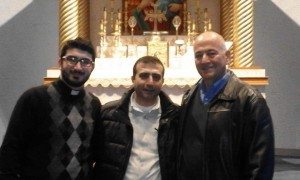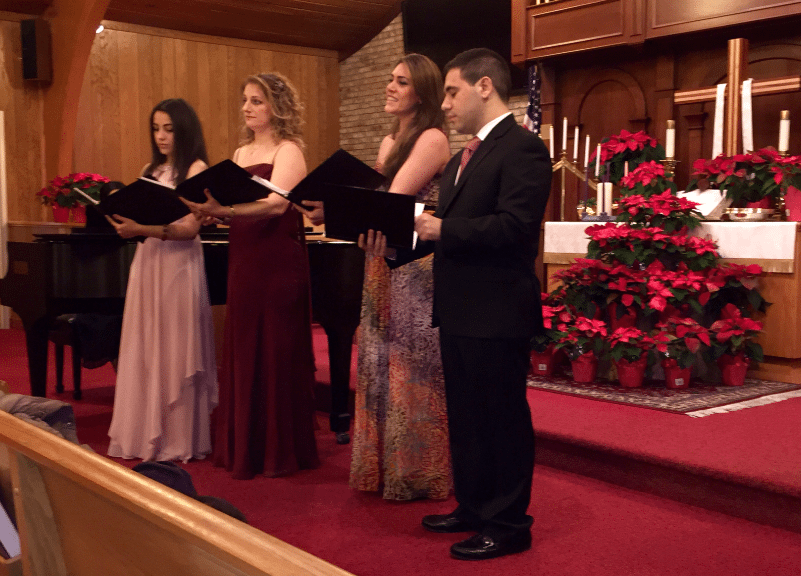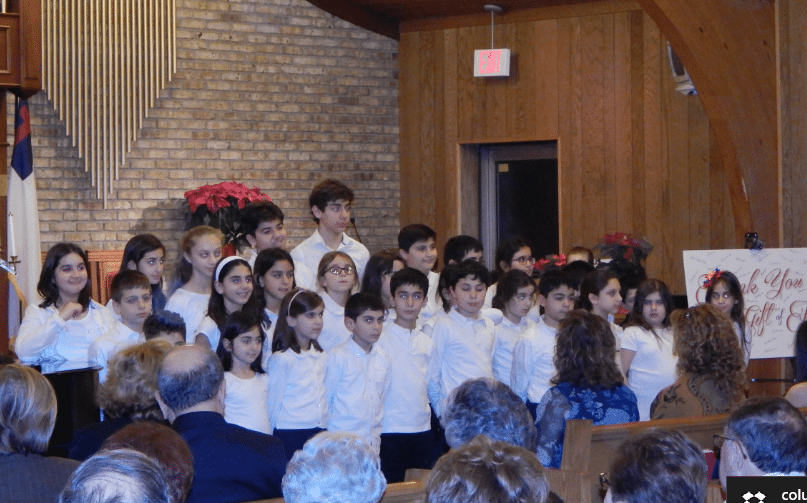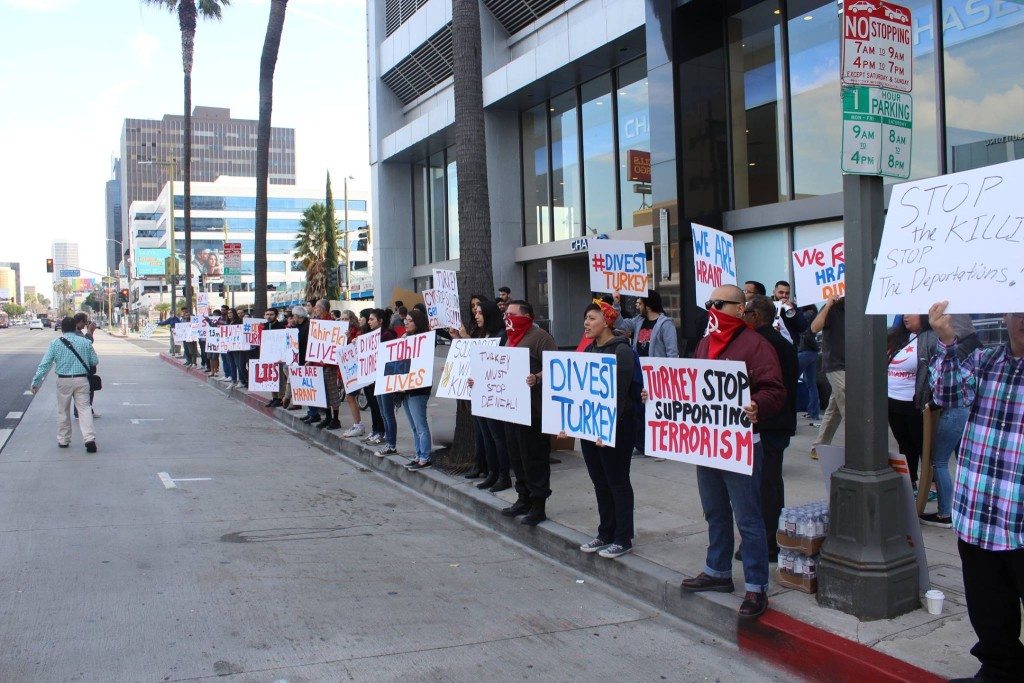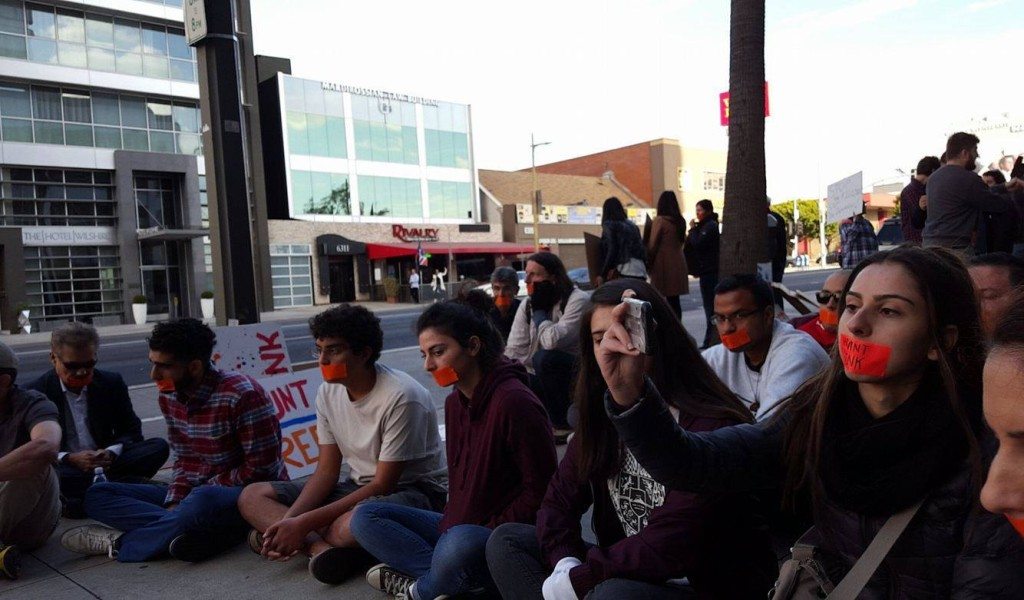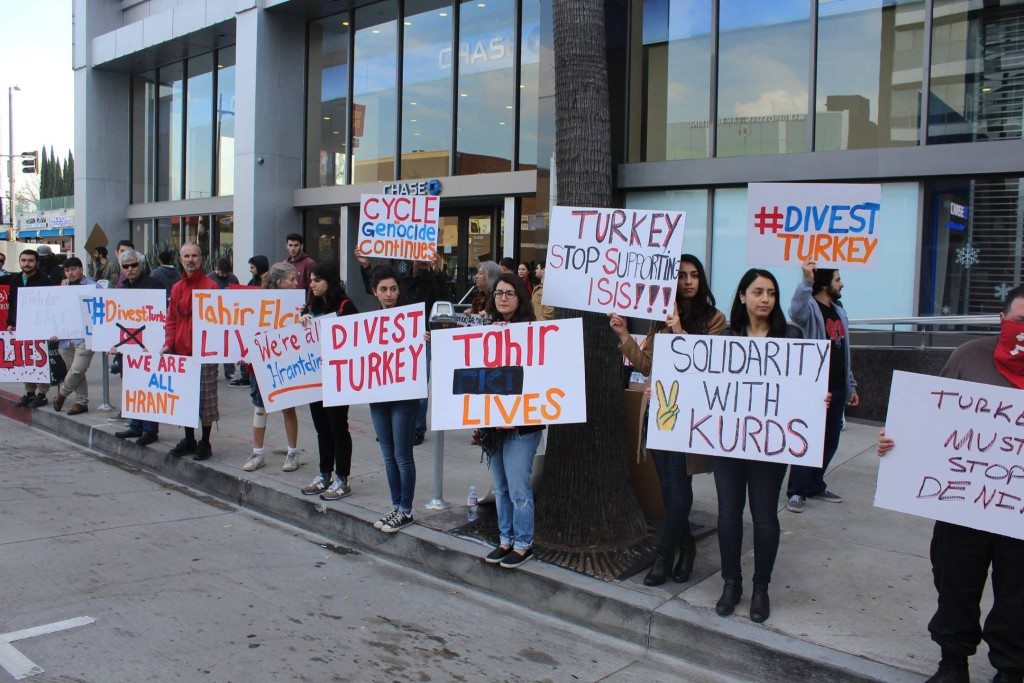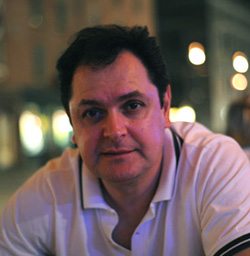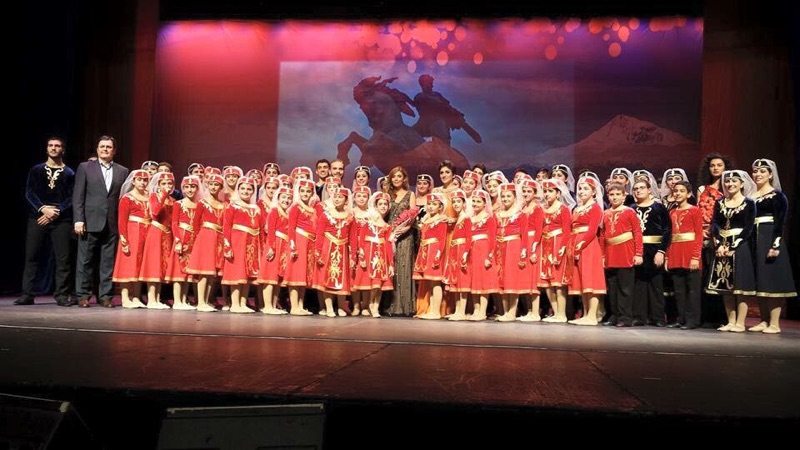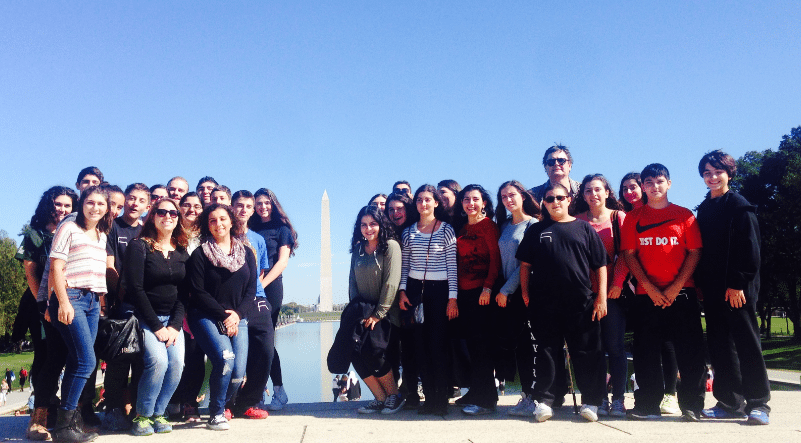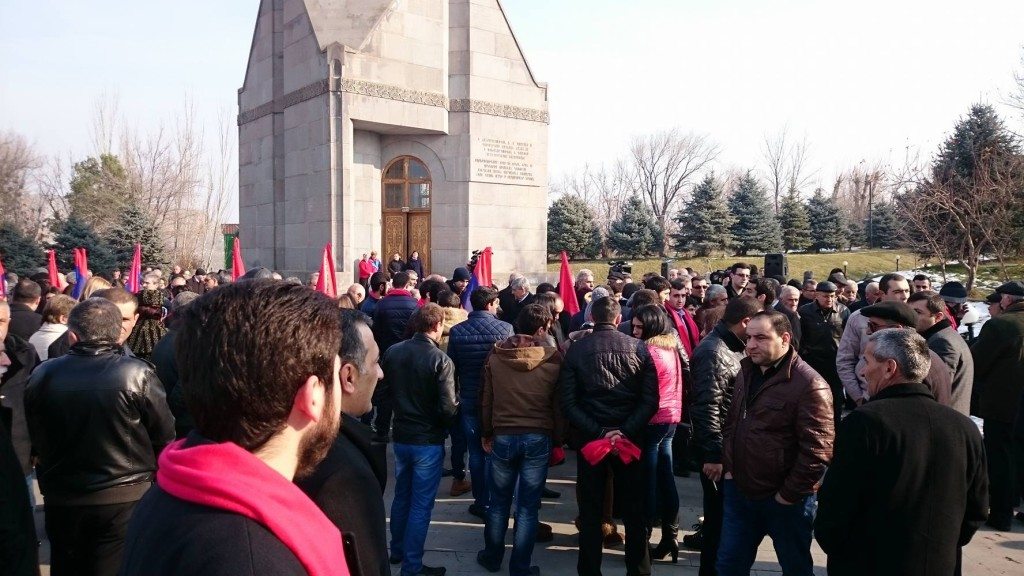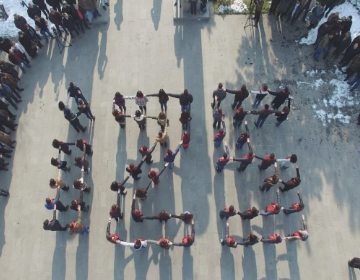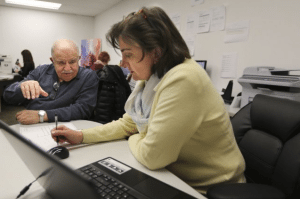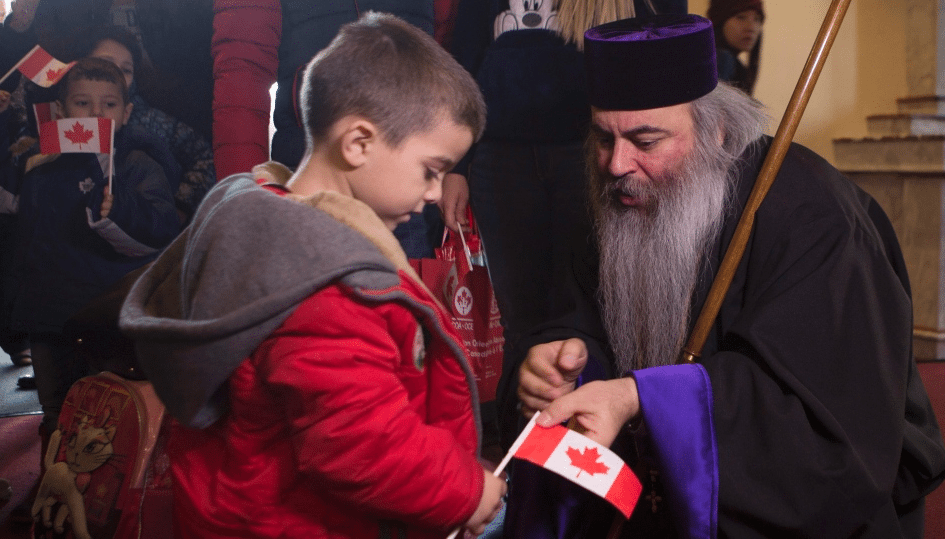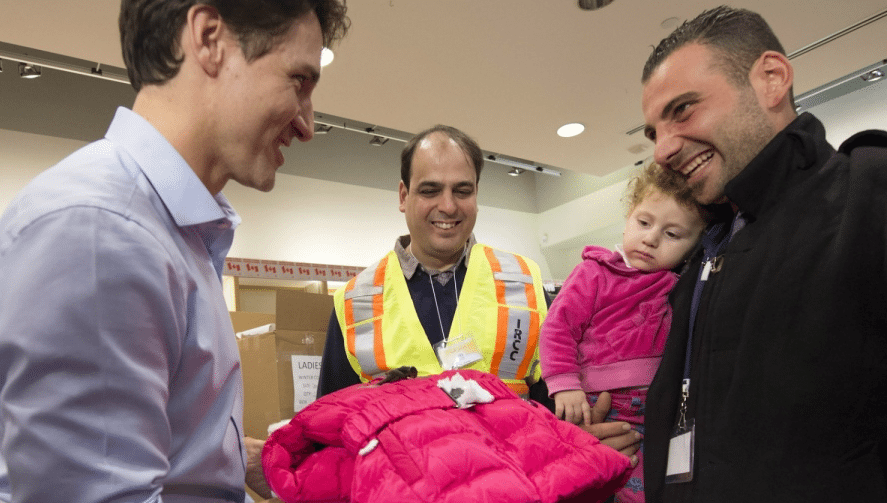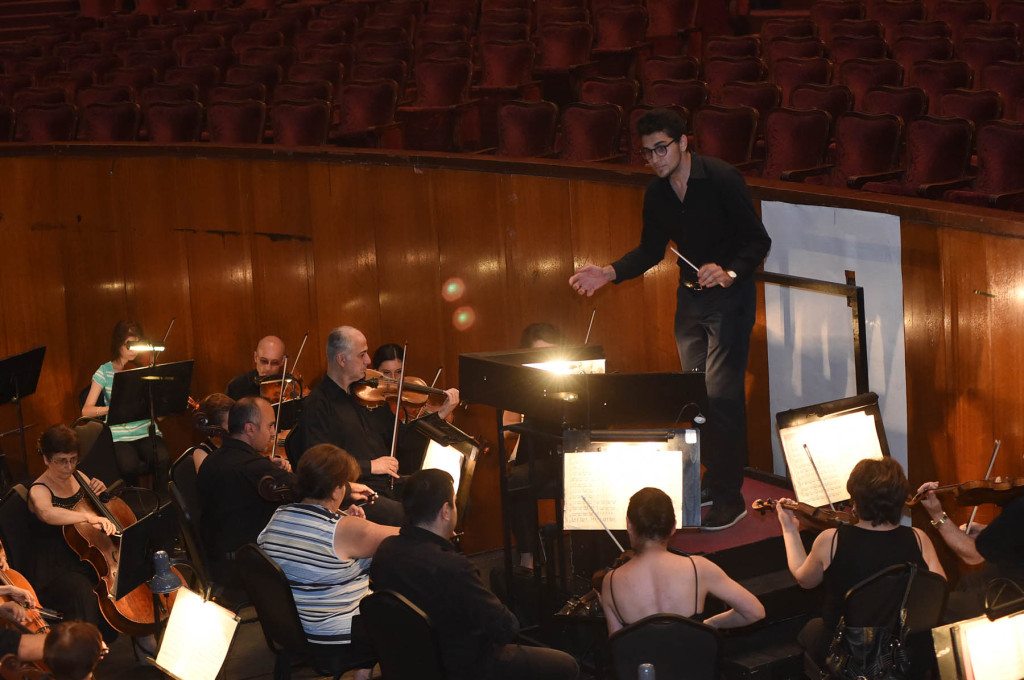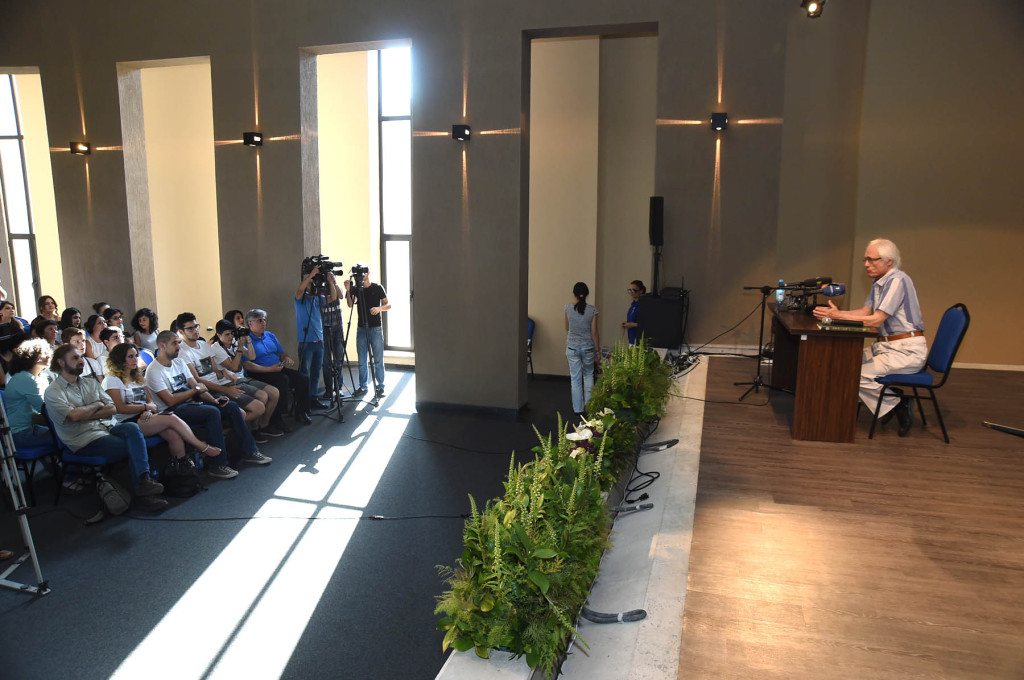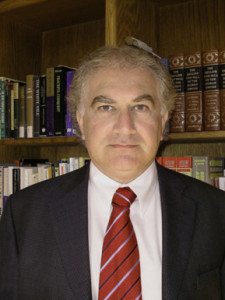Special for the Armenian Weekly
![]()
The phones ring continuously at the Armenian Community Center of Toronto SAH office. (Photo: Toronto Star)
TORONTO, Canada—The phones ring continuously. “Parev, Torontoyi Hay Getron,” greet the office workers in Armenian. Tinges of Arabic and English mix into their dialogue as they communicate sternly and urgently. Sponsoring families are desperate to help relatives, acquaintances, and even strangers who are trying to flee the Middle East as a result of the Syrian crisis—the largest migration crisis since World War II.
Lorig Katerjian and Angelique Astourian-Kirijian, who have dedicated themselves to helping those torn by the Syrian war, are answering the phones. Their office is located on the upper floor of the Armenian Community Center, adjacent to St. Mary’s Armenian Apostolic Church and the Armenian Relief Society (ARS) Day School. Across from them sit anxious individuals gripping on to their families’ applications, seeking to sponsor their relatives who are caught in the chaos of the war. Angelique was born in Aleppo and immigrated to Canada prior to the outbreak of the civil war. Since the Syrian conflict, she has been volunteering much of her time at the Sponsorship Agreement Holders (SAH) office, helping Syrian Armenians connect with sponsors to facilitate their immigration to Canada.
“Many of my friends and family who are back in Syria or who have managed to flee to Lebanon call me and beg me to sponsor them to come to Canada. However, I simply can’t. You have to have a lot of resources to bring an individual or a family to this country, and I can’t sponsor everyone,” says Angelique.
Armenians have lived in Syria and other neighboring Middle Eastern countries for over a century. “During the Armenian Genocide, which occurred during World War I, many who survived the death marches through the Syrian desserts of Der Zor began new lives in countries like Syria and Lebanon, and have inhabited that region for over a century,” says Antranik Tchilingirian, a Toronto-Armenian resident who migrated from Lebanon in the 1970’s.
![]()
Maria Karageozian is reunited with her father Hagop, a Syrian refugee, at the Armenian Community Center of Toronto
(Photo: Mark Blinch/Reuters)
The SAH office, which was the initiative of the Armenian Community Center of Toronto, has been open for four years. Members first began by helping Iraqi families during the war there. In its first year of operation, the SAH sponsored only five individuals. That number has grown to include 350 individuals over the first 4 years. Yet, it has received more than 2,000 applicants this year alone as a result of the Syrian crisis; this is consistent with Canada’s plan, under Prime Minister Justin Trudeau’s government, to help resettle 25,000 refugees in Canada by February. Just this week, the government announced plans to increase that number to 50,000 by the end of 2016.
The Karakouzian family came to Canada through the assistance of the Armenian Community Center’s office. They have been in Toronto since July. Hagop’s sister, Sosse, and her husband, Hratch Aynedjian, sponsored Hagop, a welder, his wife Lucine, and their two children, Sako and Hushig. They had filed their papers in November of last year; the process took eight months.
Prior to coming to Canada, the Karakouzian family had to go through a security process that is conducted by Canadian officials. Canadian visa officers stationed abroad ensure the papers check out to confirm refugee status. Each member of the family that is applying must be interviewed. Once a visa officer decides that a refugee’s application is credible, they are able to come to Canada. If questions arise, the applicant must meet with Canadian Security Intelligence, which can lengthen the process by 18-24 months. However, if the interview goes well, the process typically takes 8-10 months, as was the case for the Karakouzians.
“Individuals or families send us an application, we make sure they are correct, we send them to the processing office, and they wait for an interview with a government official to receive approval,” says Angelique. The interviews could be in Jordan, Turkey, or— as was the case for the Karakouzians—Lebanon.
The Karakouzians had to cross the Syrian international border to reach Lebanon. They had to take a route that was government-controlled from Aleppo to Damascus, because these routes were safe from ISIS militants. They began in Aleppo, went to Hama Homs, traveled back north due to unsafe roads, made it to Latakia, and then got to Tripoli before safely reaching Beirut. A five-hour trip under normal circumstances took them an entire day. They spent about four months in Lebanon, with Hagop working odd jobs in Beirut, while his wife tended to the kids, who weren’t attending school.
![]()
Bishop Meghrig Parikian, Prelate of the Armenian Apostolic Church of Canada, greets a Syrian newcomer. (Photo: CTV)
The community center’s sponsorship office also plays a key role in helping refugee individuals and families transition to Canadian life. “Upon their arrival we assist with their resettlement needs—social insurance, medical papers—essentially everything you need to come to Canada,” says Angelique.
Hagop’s family of four lives in a Scarborough bungalow with Sosse’s family of five. Sosse attests that the family dynamic and their living conditions have changed drastically. “We have to be careful what we watch on television because sometimes my brother’s kids get scared because they see something that reminds them of the war,” Sosse says.
Sosse’s husband also stresses the financial burden it has placed on their family. “I need to account for four more people in addition to my family. For the year that I am responsible for them, it will likely cost me around $25,000 to support them and get them on their feet,” he says.
The office has also worked hard to find Syrian refugees jobs. Lorig Katerjian says that nearly all of the Syrian refugees they’ve helped come to Canada—besides the elderly and children—have found jobs within the first week. The office helps pair employers with refugees through community contacts that speak Arabic and Armenian to help with the language barrier. “They’re mostly minimum wage jobs, but it’s a start. Some are cashiers at ethnic grocery stores, or pastry chefs at Middle Eastern bakeries, or servers at Mediterranean restaurants,” says Lorig. Furthermore, the community’s ARS Armenian School is helping refugee children by providing their first year at the school tuition-free.
![]()
On Dec. 11, about 90 Syrian Armenians reached Toronto’s Pearson International Airport, where Prime Minister Trudeau and Ontario Premier Kathleen Wynne greeted them, and provided them with winter apparel and other necessities. (Photo: CTV)
Sponsors are responsible for providing essentials during the first year, including shelter, transportation, food, and clothing. An article in the Toronto Star estimates the annual cost of sponsoring an individual at $12,000 for the first year. Sponsors must also ensure that refugees stay in Toronto for the first year.
As for Sosse’s brother, he has found work in his trade as a welder, and he and his family are gradually adapting to Canadian life. His children are attending the Armenian school along with Sosse’s children, and they are happy to be safe in a peaceful country.
On Dec. 11, about 90 Syrian Armenians reached Toronto’s Pearson International Airport, where Prime Minister Trudeau and Ontario Premier Kathleen Wynne greeted them, and provided them with winter apparel and other necessities. The newly arrived refugees were taken to the Armenian Community Center to meet with their sponsors and loved ones. Since then, several more government-sponsored planes have arrived in Canada, carrying refugees looking for a safer life.





















